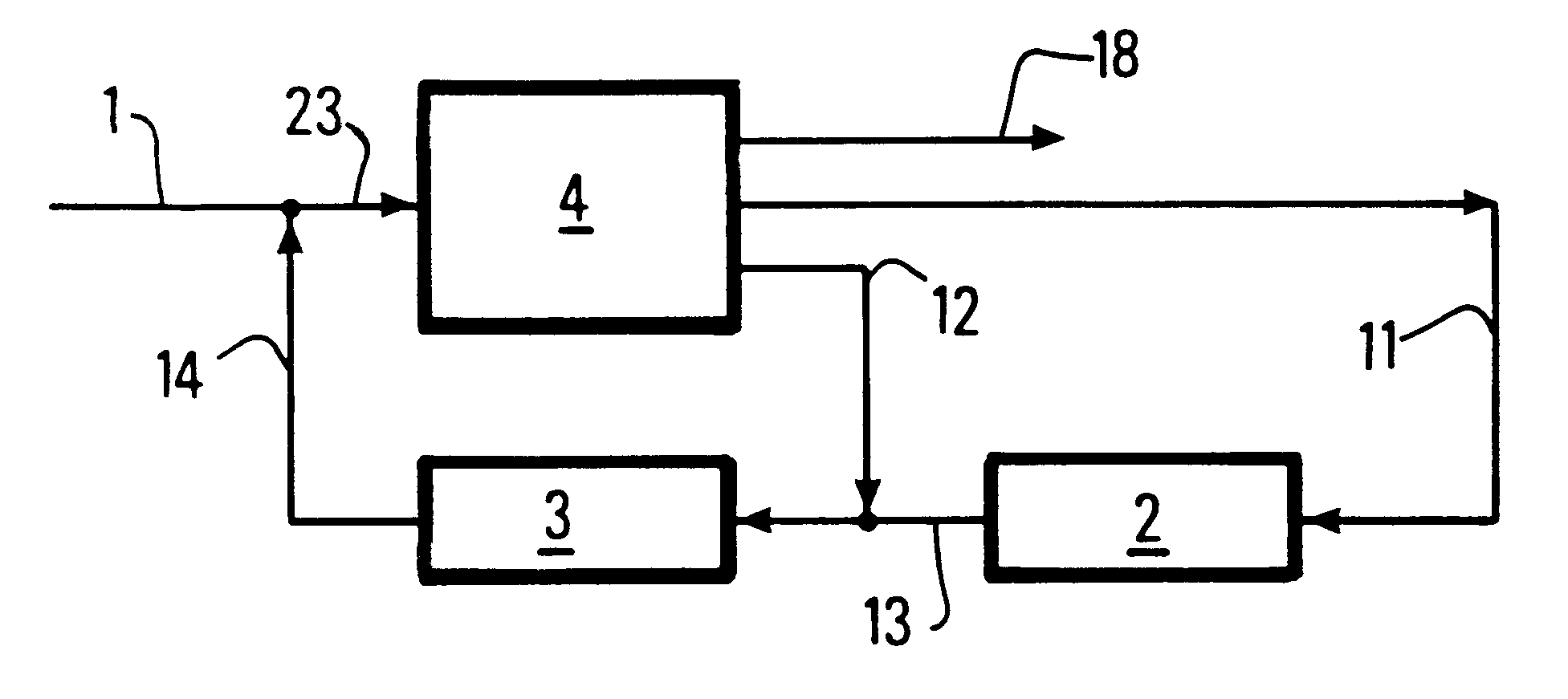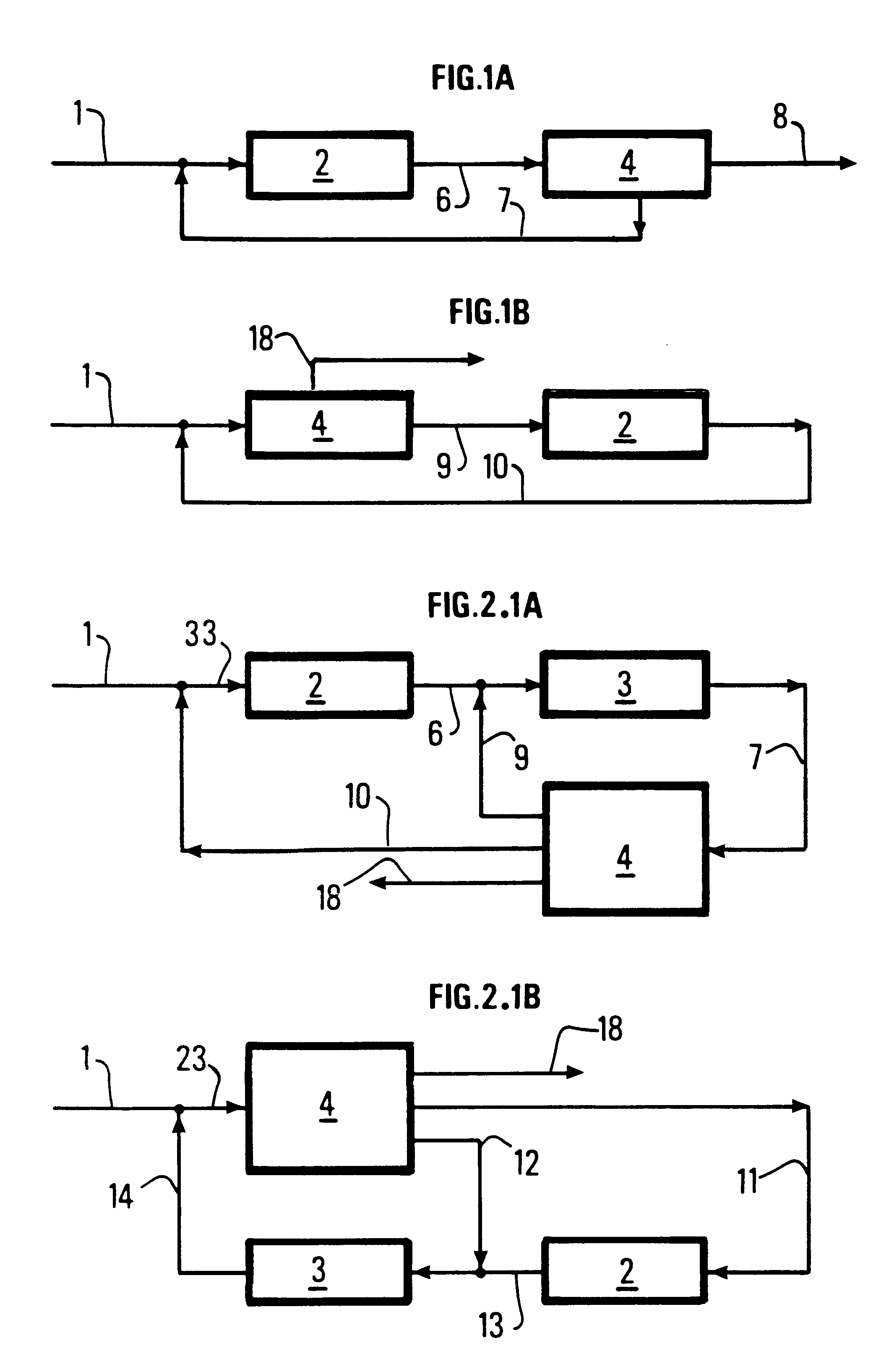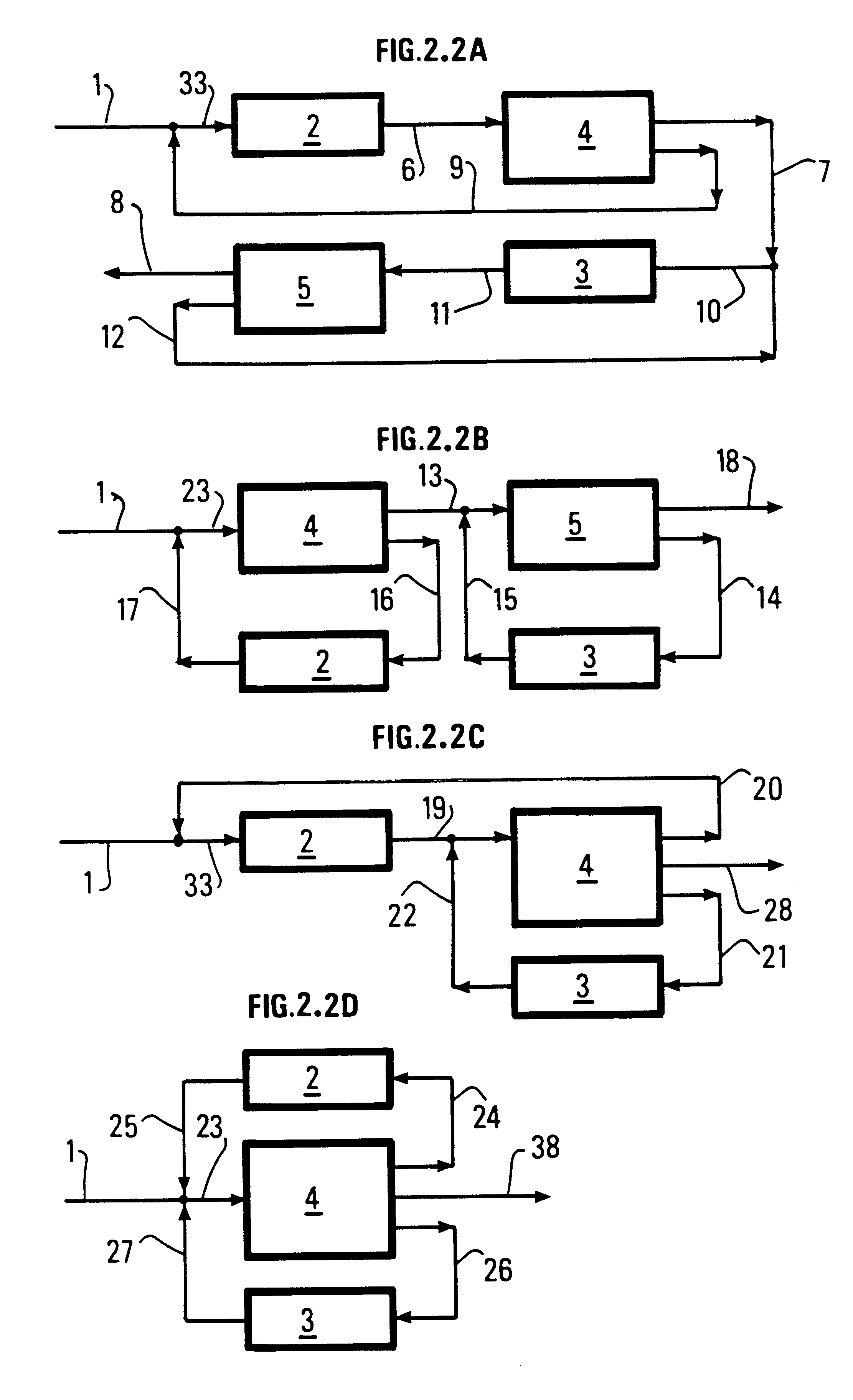High octane number gasolines and their production using a process associating hydro-isomerization and separation
a technology of hydroisomerization and high octane, which is applied in the direction of fuels, hydrocarbon oil treatment products, naphtha treatment, etc., can solve the problems of difficult determination, pentane cannot be sent to the gasoline pool, and the tendency to crack
- Summary
- Abstract
- Description
- Claims
- Application Information
AI Technical Summary
Benefits of technology
Problems solved by technology
Method used
Image
Examples
example 2
Hydro-isomerisation of a Straight Run C5-C8 Cut
Consider the properties of a premium grade type gasoline pool constituted by the following bases: a reformate, an FCC gasoline, an alkylate, an oxygen-containing compound and a C5-C6 hydro-isomerisation gasoline. The reformate, FCC gasoline and alkylate were identical to those of Example 1. Table 3 summarises the properties of the mixture with the proportions by volume of each constituent.
By way of comparison, consider a premium grade type gasoline pool constituted by unchanged FCC gasoline, alkylate and MTBE bases, in the same proportions, with a smaller proportion of reformate. The C5-C8 cut was treated using the hydro-isomerisation process of the invention (variation 2.1b, FIG. 2.1B) which replaced the C5-C6 hydro-isomerisation unit described above. The composition of the isomerate was as that obtained after the pilot tests on the C5-C8 feed mentioned above. The separation section was upstream of the reaction section. The aromatic an...
example 3
Hydro-isomerisation of a C5-C7 Cut Including a Light Reformate
1. Hydro-isomerisation of a light reformate cut at 85.degree. C. and addition of a c5-C6 hydro-isomerisation gasoline (identical to that reported in Table 3, 18% of normal paraffins). In this case we consider a hydro-isomerisation process in accordance with variation 2.1b, i.e., separating the aromatic compounds upstream of the hydro-isomerisation section. These aromatic compounds were sent to the gasoline pool without being saturated.
Consider a gasoline pool constituted by FCC gasoline and alkylate already described in the preceding examples, also heavy reformate (initial point 80.degree. C.; end point 220.degree. C.) and light reformate+light gasoline hydro-isomerised using the process of the invention (the aromatic compounds being extracted upstream of the isomerisation section).
Compared with the gasoline the composition of which was described in Table 3, which did not involve isomerisation of a light reformate, the ar...
PUM
| Property | Measurement | Unit |
|---|---|---|
| Fraction | aaaaa | aaaaa |
| Fraction | aaaaa | aaaaa |
| Fraction | aaaaa | aaaaa |
Abstract
Description
Claims
Application Information
 Login to View More
Login to View More - R&D
- Intellectual Property
- Life Sciences
- Materials
- Tech Scout
- Unparalleled Data Quality
- Higher Quality Content
- 60% Fewer Hallucinations
Browse by: Latest US Patents, China's latest patents, Technical Efficacy Thesaurus, Application Domain, Technology Topic, Popular Technical Reports.
© 2025 PatSnap. All rights reserved.Legal|Privacy policy|Modern Slavery Act Transparency Statement|Sitemap|About US| Contact US: help@patsnap.com



